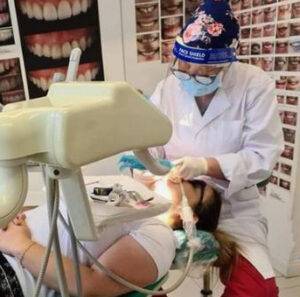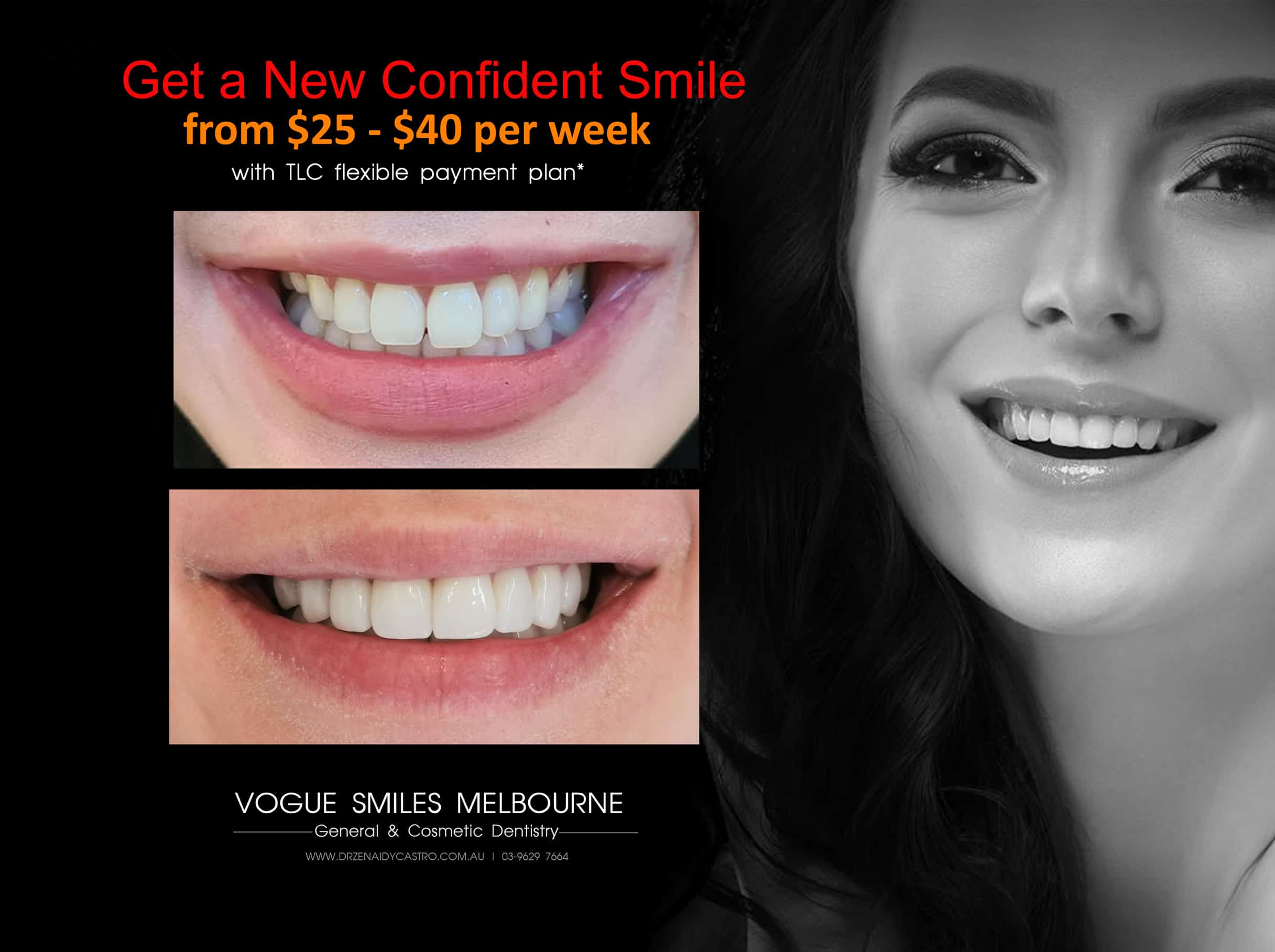Are you looking for an affordable Cavity Dental Fillings?
Find here procedure and cost of Cavity Dental Fillings in Melbourne
Read more below.
affordable Cavity Dental Fillings Melbourne CBD | Tooth Fillings Melbourne
a
What causes Cavities or Tooth Decay?
Cavities occur as a result of tooth decay. Tooth decay is the destruction of tooth structure. Tooth decay can affect both the enamel (the outer coating of the tooth) and the dentin layer of the tooth.
Tooth decay occurs when foods containing carbohydrates (sugars and starches) such as bread, cereals, milk, soda, fruits, cakes, or candy are left on the teeth. Bacteria that live in the mouth digest these foods, turning them into acids. The bacteria, acid, food debris and saliva combine to form plaque, which clings to the teeth.
The acids in plaque dissolve the enamel surface of the teeth, creating holes in the teeth called cavities, or caries
Who Gets Cavities?
Many people think cavities only affect children, but changes that occur with ageing make cavities an adult problem too.
Recession of the gums (a pulling away of gum tissue from the teeth), often associated with an increased incidence of gingivitis (gum disease), can expose tooth roots to plaque. Also, sugary food cravings in pregnant women can make them more vulnerable to developing cavities.
Decay around the edges of fillings is also common in older adults. Because many older adults lacked the benefits of fluoride and modern preventive dental care when they were growing up, they often have a number of dental fillings. Over the years, these fillings may weaken and can fracture, allowing bacteria to accumulate in the tiny crevices causing tooth decay.
How Do I Know if I Have a Cavity or tooth decay?
Your dentist can discover cavities during your regular dental check-up. The tooth surface feels soft when probed by your dentist with a dental instrument.
X-rays can also show cavities before they become visible to the eye.
In advanced stages of tooth decay, you might experience a toothache, especially after consuming sweet, hot, or cold foods or drinks.
Other signs of tooth decay are visible pits or holes in the teeth.
How are cavities or tooth decay being treated?
Cavities are treated in a number of different ways depending on the extent of tooth decay. If decay is not extensive, the decayed portion of the tooth is removed by drilling and replaced with a filling made of silver alloy, gold, porcelain, or a composite resin. Restorative materials used in fillings are considered safe. Concerns have been raised over the safety of mercury-based, silver amalgams in particular, but the ADA, FDA, and other public health agencies continue to support the safety of this restorative material. Allergies to silver amalgam are rare as are allergies to other restorative materials.
If the decay is extensive and there is limited tooth structure remaining, crowns will be used. If a crown is needed, the decayed or weakened area of the tooth is removed and repaired and a crown is fitted over the remainder of the tooth. Crowns are made from gold, porcelain, or porcelain fused to metal.
What Steps Are Involved in Filling a Tooth?
First, the dentist will use a local anesthetic to numb the area around the tooth to be filled. Next, a drill, air abrasion instrument, or laser will be used to remove the decayed area. The choice of instrument depends on the individual dentist’s comfort level, training, and investment in the particular piece of equipment as well as location and extent of the decay.
Next, your dentist will probe or test the area to determine if all the decay has been removed. Once the decay has been removed, the dentist will prepare the space for the filling by cleaning the cavity of bacteria and debris. If the decay is near the root, your dentist may first put in a liner made of glass ionomer, composite resin, or other material to protect the nerve. Generally, after the filling is in, your dentist will finish and polish it.
Choosing the Right Type of Cavity Dental Fillings
Despite advances in dental hygiene and dental care, tooth decay remains a problem for many children and adults. If not treated properly and in a timely manner, tooth decay can lead to more serious dental health problems including abscessed and failing teeth
There are a variety of different types of materials that can be used to fill cavities in the teeth including the following:
- gold
- silver amalgam
- composite
- ceramic
- glass ionomers
Although each of these types of materials can be used to fill cavities in the teeth, some types of fillings are better suited for certain conditions. Your dentist is the best person to help you determine the material that is most suited for your needs, taking into consideration your budget and your current dental health.
When trying to decide which type of Cavity Dental Fillings is best suited for you, you need to factor in the location of the cavity in your mouth, severity of decay, cost, and your insurance coverage.
Read on to get more information about each of these materials for Cavity Dental Fillings.
- Gold fillings are very strong, non-corrosive and can last up to 15 years, with proper care. However, they are much more expensive than silver amalgam fillings and require more than one dental visit to be fitted correctly.
- Silver amalgam fillings are also very strong and sturdy, however, many individuals do not find them to be aesthetically pleasing. In addition, they are more likely to expand and contract and to cause a tooth crack as compared to other types of fillings. In addition, many individuals worry about the long-term safety of silver amalgam fillings since they contain Mercury: a known neurotoxin.
- Composite fillings are an attractive option because they can be closely matched to the color of your teeth. However, composite fillings are more expensive than silver amalgam fillings and are not as durable.
- Ceramic fillings are made of porcelain and are a very aesthetically pleasing option that is also very durable. However, ceramic fillings cost more than silver amalgam fillings and can wear the opposing teeth if the porcelain becomes rough.
- Glass ionomers (acrylic fillings) often last for less than five years but are a good choice for children if their teeth are changing. They can also release Fluoride and this helps to prevent tooth decay.
- Again, your dentist is the best person to help you decide which type of material to use for your dental fillings. If you have additional questions about any of these types of fillings, talk to your dentist today.
Are white fillings better than silver?
Dentists have been replacing decayed teeth with silver-coloured fillings, which are made of amalgam, for decades. But nowadays, if you’ve been told that you need a filling, you can ask if it’s possible to have a white filling to leave your tooth with a more natural look.
Modern white fillings are much stronger than those from several years ago. They are also bonded to the tooth to effectively seal the margin. Amalgam fillings just plug the hole and do not seal the margins or reinforce teeth. They are, however, very strong and a well-placed amalgam filling can last for several years.
More modern white fillings are also now very strong and can also last several years when placed correctly and when used in the correct situation. However, the technique to place them is crucial as the tooth must be kept free from contamination once the sealing and filling procedure starts. Saliva can cause the materials not to stick to the tooth structure so the seal is then compromised and the filling will fail in a short space of time.
Amalgam filling placement is more forgiving though the aim is still to avoid contamination to that this filling will last as long as possible.
What happens during the Cavity Dental Fillings procedure and how long does it take?
Having made the tooth numb with a local anaesthetic, the cavity is cleaned, and all decay removed. The cleaned cavity is now sealed with an appropriate bonding agent, which not only seals the exposed tooth structure but also allows the white composite filling material to bond to it.
The filling material is then placed in a number of layers and each layer set with the high-intensity light. Once completed, the bite is checked for any high spots and polished, so it feels as smooth as a natural tooth. The duration of the procedure can be anything from 20 to 40 minutes depending on the size of the cavity involved.
How Long Do Cavity Dental Fillings Last?
Dental fillings can be made from several different kinds of materials, and the type of filling you have goes a long way in determining how long it should last.
Fillings usually don’t last a lifetime, so getting regular dental checkups can help you determine when a filling might have to be replaced.
Typically, fillings last around 10 years. Many restorations (the clinical term for dental fillings) last much longer.
In addition to the materials used, other factors affecting the life span of a filling include:
- your eating habits
- dental hygiene
- trauma to your tooth
- decay around the filling
- grinding your teeth while you sleep
Though several factors affect the durability of fillings, the materials used can give you a good idea of how long a particular filling should last.
| Type of filling | Average duration |
| amalgam | 15 years |
| composite | 7 years |
| ceramic | 15 years |
| glass ionomer | 5 years |
When should Cavity Dental Fillings be replaced?
You may be fortunate enough to never need a replacement filling.
But odds are that, over the course of your life, a filling may crack or wear down to a point where it’s no longer protecting the tooth from further decay. And sometimes, a filling just falls out and needs to be replaced.
You may not notice when a filling first has problems, but your dentist should be able to spot trouble early on during a routine checkup.
Your dentist uses a tool called an explorer to probe around the edges of the filling to make sure it’s still sealed to the tooth or see if there are spots where bacteria can enter the tooth and cause further decay.
Dental X-rays can also reveal decay under the filling or anywhere nearby. If it appears the filling is no longer keeping out bacteria and supporting the tooth, it’s time for a replacement.
A sore or sensitive tooth may also indicate it’s time to replace a filling. But you don’t want to wait until then to have your fillings routinely examined.
Can my diet affect how long Cavity Dental Fillings last?
Eating sugary foods is one of the biggest predictors of how long your fillings will last. Sugar can make it easier for biofilms to grow on your fillings and cause new cavities underneath existing fillings as well as on previously healthy teeth.
Biting down on hard candy, nuts, ice, and other hard foods can increase the wear and tear on your fillings and your teeth.
You should also avoid gum, beef jerky, gummy candy or vitamins, and other sticky foods that may pull on your fillings.
Also, if you have composite fillings, beverages like tea and coffee can stain them just as they can natural teeth.
What Happens If You Don’t Get a Cavity Dental Fillings?
When decay damages a tooth, the destruction to the enamel is irreversible. If the cavity is left untreated, the decay can spread and worsen, destroying healthy parts of the tooth. And if enough time goes by, your dentist won’t be able to repair the tooth with a conventional filling at all . . .
A Root Canal
If the decay reaches the pulp chamber of the tooth, where the nerve and blood vessels are located, the bacteria will irritate and infect the pulp. Eventually, this may lead to an abscess, which is a swollen area of tissue containing an accumulation of pus (lovely, right?). Abscesses are typically very painful, and they can’t be repaired with a simple filling. At this point, your dentist will need to perform a root canal to save your tooth. The infected pulp will be removed, the inside of the tooth will be cleaned, and the tooth will be sealed. Often, the tooth must be covered with a crown as a final, protective step.
Extraction
Given enough time, decay will wreak havoc on a tooth and may destroy it entirely. If this happens, a root canal won’t be able to save the tooth. Your dentist will need to extract the tooth and replace it with an implant or a bridge.
Can the Cavity or Tooth Decay heal by itself?
A cavity will not heal on its own – it will only worsen. And as it worsens, the treatment options become more extensive and expensive. Root canals and crowns are not cheap treatments, and replacing a tooth is often even more costly. By treating a cavity with a simple filling early, you can save yourself money, pain, stress, and perhaps even a tooth!
A filling can restore a damaged tooth, returning its functionality and eliminating any pain. It’s an extremely common, routine procedure.
Preventing Cavity or Tooth Decay
- Brushing your teeth at least twice a day, but even more preferably, after every meal and before bedtime
- Flossing your teeth every day
- Using a toothpaste that contains fluoride
- Visiting your dentist for a check-up and cleaning at least twice a year. At your visit, your dentist may recommend daily use of a fluoride rinse or fluoride gel to keep your teeth healthy
An ounce of Preventative dentistry is worth a pound of a cure. See your dentist regularly
Don’t Skimp on Oral Health
Right now is a difficult economic time. Many people are trying to cut corners where they think they can. Cutting costs is good for some things, but for your health it is not. Some individuals are deciding to cut their dental health care from their costs. This is a poor decision because much of the preventative care has many benefits.
Although the individual may save money by not having regular visits, two serious issues emerge. First, many health benefits are a part of having good oral health. Cutting the dentist can affect your overall physical health in many areas. The second reason this is bad is it could cost you more. If you delay a dentist visit, you may miss the early signs of a serious problem. It is possible that you may save some money now on routine checkups, but you could be setting yourself up for a situation where you have to pay for costly procedures to fix or repair a serious issue that went untreated.
Frequently Asked Questions for Cavity Dental Fillings
Although you can read through the steps of the procedure and research the material options you probably still have a lot of questions left. Here are some of the most common questions, however you should always check with your dentist before you make any final decisions.
Does Insurance Cover Cavity Dental Fillings?
Yes, and no. Many insurance companies will cover part of the cost of a composite filling usually matching what the price of a silver filling. The patient usually has to pay the difference between the expense of the silver filling and the final price of the procedure.
How much does cavity Dental filling cost in Melbourne?
Cost is something that often comes to mind with dental procedures as their services don’t come free of charge. Having an overview on what to expect with regards to the cost of your dental treatment will definitely go a long way in making your trip to a dentist worthwhile.
Dental filling is considered to be one of the more popular procedures that is done to patients regularly. How much will a tooth filing cost you in the present day?
Factors that afffect the Cost of Dental Fillings
- The location of the tooth needing repair
- The extent of damage that needs to be repaired
- The type of material used
- The number of teeth that you want these tooth filling to be applied
- How complex is the treatment.
You can expect them to range from $50 – $1500. A composite filling cost more than your standard filling with a range of $150 to $400 for a single tooth. For an amalgam filling, maybe it will cost around $50 – $150 per filling and $900 – $1,500 for gold.
What are Indirect Fillings?
Indirect fillings aren’t the newest thing in dentistry and although they are visually appealing many patients find them inconvenient.
An indirect filling is similar to a composite filling, but instead of the dentist curing the multiple layers of filling material, they will take an impression of your tooth after they drill out the decay and finish its shape. While you wait for your final filling, the dentist will put in a temporary filling that they will remove during your second visit, and then they will fit in your permanent, indirect, filling. They fit these fillings with cement, so they aren’t going anywhere!
There are two different types of indirect fillings an Inlay will sit into the tooth, and an Onlay will sit over the tooth. You may have heard of an Onlay called a Crown or a partial Crown.
What is a Temporary Filling and Will I Need One?
It’s not common to need a temporary filling if you’re not choosing an indirect filling option. But, if the pulp inside your tooth becomes irritated your dentist may need to schedule a second appointment so that they can ensure the filling sits entirely inside your tooth. At that time you would need a temporary filling. Another reason for needing a temporary filling is if you needed a root canal. During root canals, the pulp will become irritated and filling the tooth at that time is not possible.
How Do I Care for My Teeth After Dental Fillings?
Any dentist will encourage you to practice good oral hygiene that includes brushing after meals or at least twice a day, using a non-whitening toothpaste, flossing regularly and using an antibacterial mouthwash. These practices are the standard for dental health.
However, if you notice that your filling doesn’t fit well in your tooth or that the tooth becomes extremely sensitive, you should seek help from your dentist immediately because it may have come loose or cracked.
How Can I Prevent Needing Cavity Dental Fillings?
Good dental hygiene is the only way to prevent dental fillings. However, there are still some aspects left to chance. Misstepping a stair, or curb can cause you to fall and fracture a tooth resulting in a filling. You could practice excellent dental hygiene for years, and they still have holes appear in your teeth from aging.
Dental fillings are not always preventable.
Are Silver Fillings Safe?
Silver fillings or Amalgam fillings are safe however there were many concerns over the last few decades. Amalgam fillings contain trace amounts of mercury which many people believe causes Alzheimer’s, autism, and multiple sclerosis. None of these claims have substantial evidence, and the American Dental Association’s official statement is that there is no proof that Amalgam fillings link to any of these issues.
The Food and Drug Administration with many other public health agencies supports the ADA pointing out that there’s no scientific basis for these claims.
However because mercury is known as a harmful substance and is present in Amalgam fillings many dentists will recommend people with compromised health, pregnant women, and children choose a different filling option.
What are Some of the Common Problems with Cavity Dental Fillings?
Immediately after the procedure, you’ll likely have some minor tooth sensitivity especially to pressure. It may be uncomfortable to chew for a few days. However, the sensitivity should go away within a week or two. After two weeks if you still have sensitivity, you should go back to your dentist so they can assess the problem.
The other common complaint with fillings is that they don’t “fit” right, meaning that your dentists may need to shape the filling more to accommodate your bite. This issue is easy to fix and usually will not result in another charge.
https://www.youtube.com/embed/mwZOnedsxaU








